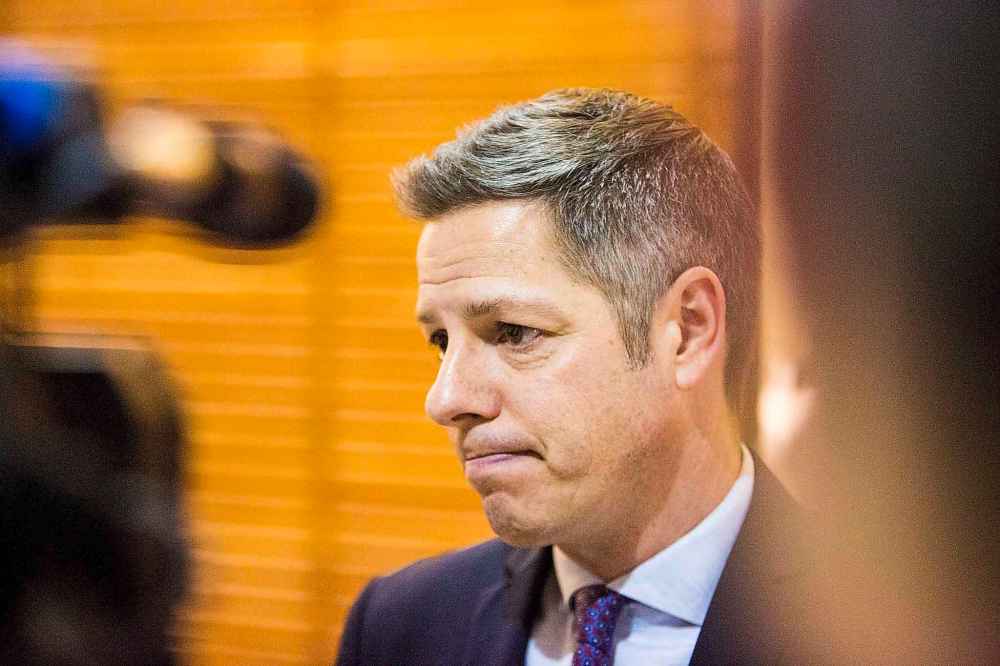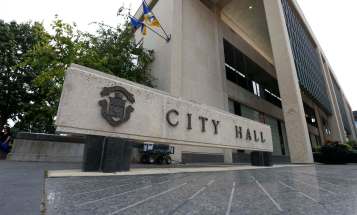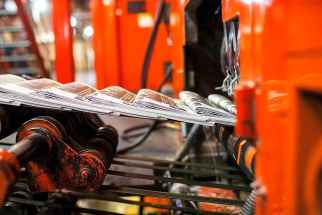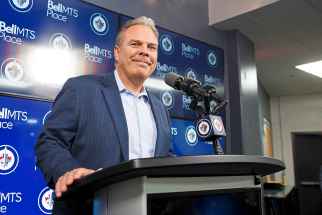Dispel the myth: city cupboards are not bare
Read this article for free:
or
Already have an account? Log in here »
To continue reading, please subscribe:
Monthly Digital Subscription
$0 for the first 4 weeks*
- Enjoy unlimited reading on winnipegfreepress.com
- Read the E-Edition, our digital replica newspaper
- Access News Break, our award-winning app
- Play interactive puzzles
*No charge for 4 weeks then price increases to the regular rate of $19.00 plus GST every four weeks. Offer available to new and qualified returning subscribers only. Cancel any time.
Monthly Digital Subscription
$4.75/week*
- Enjoy unlimited reading on winnipegfreepress.com
- Read the E-Edition, our digital replica newspaper
- Access News Break, our award-winning app
- Play interactive puzzles
*Billed as $19 plus GST every four weeks. Cancel any time.
To continue reading, please subscribe:
Add Free Press access to your Brandon Sun subscription for only an additional
$1 for the first 4 weeks*
*Your next subscription payment will increase by $1.00 and you will be charged $16.99 plus GST for four weeks. After four weeks, your payment will increase to $23.99 plus GST every four weeks.
Read unlimited articles for free today:
or
Already have an account? Log in here »
Hey there, time traveller!
This article was published 30/12/2019 (2170 days ago), so information in it may no longer be current.
Winnipeggers can expect renewed calls for higher property taxes in 2020, beyond the 2.33 per cent cap Mayor Brian Bowman has pledged to honour.
The city’s new four-year, open-budget process — which gave taxpayers a look behind the curtain — has apparently spooked some into believing the only way to save their local pool or library branch is to substantially raise taxes. That fear is based largely on the false claim the City of Winnipeg is “broke” and has no choice but to raise taxes to maintain basic services.
As 2019 comes to a close, it’s a good time to review some basic facts about the state of the city’s finances, including why they’re a lot healthier than the doomsday crowd would have the public believe.

For starters, the city is not “broke.” It has a healthy cash flow, an excellent credit rating, and has amassed record levels of reserve funds (it added $31 million to its fiscal stabilization reserve in 2018).
The city is borrowing far more than it has in the past, which is a concern. However, its debt and financing charges are well below the city’s self-imposed limits.
One of the biggest misconceptions is the city suffers from weak or flat revenue growth as a result of past property tax freezes. Nothing could be further from the truth.
According to its audited consolidated financial statements, revenues have grown 49.8 per cent from 2008 to 2018.
For starters, the city is not “broke.” It has a healthy cash flow, an excellent credit rating, and has amassed record levels of reserve funds.
Total revenues from taxation, user fees, utility services, funding from senior levels of government, and other sources have increased to $1.904 billion from $1.271 billion. That’s well beyond the combined rate of inflation and population growth.
During the same period, Winnipeg’s inflation rate increased 17.7 per cent. The city’s population grew by 13.4 per cent. At nearly 50 per cent, revenue growth has far outstripped the combined rate of inflation and population growth of 31 per cent over the past 10 years.
The city has much higher revenue per capita today (adjusted for inflation) than it did in 2008. It also has far more revenue per taxable property now than it did 10 years ago.
The real debate at city hall is how to spend that money.
Like all governments, it has to make tough choices between wants and needs. It must decide what core municipal services it should deliver and what discretionary costs should fall by the wayside.
That part of governing is never easy. Politicians have to contend with conflicting public demands. Some want the city to do more for society, often beyond the core mandate of a municipal government; few want to pay higher taxes to finance those expanded services.
Even with healthy revenue growth, city hall should be constantly re-evaluating how it spends tax dollars. It should be looking at how it can provide existing services more efficiently, while leaving no stone unturned in controlling costs.
The real debate at city hall is how to spend that money.
Labour expenditures have been a prime example. The city’s salary and benefits costs have historically grown by twice the combined rate of inflation and population growth. It’s been unsustainable and has taken resources away from other areas, including much-needed infrastructure upgrades.
Over the past two years, Bowman and city council have made progress on curbing those costs, in large part through more sustainable collective agreements (including police and firefighter contracts). That has freed up money to help finance other areas, including capital costs.
But that’s just a start. Labour costs must be kept in check in perpetuity. City hall still has a lot more work to do in redirecting existing resources to higher-priority areas and finding innovative ways of spending tax dollars wisely.
Jacking-up taxes is the lazy way to govern. Anyone can run a government by ignoring costs and charging taxpayers whatever is needed to finance bloated bureaucracies, unsustainable labour expenses, inefficient service delivery and mission creep.
That’s what some will be calling for in 2020, as they continue to perpetuate the cupboards-are-bare myth at city hall.
Let’s hope smarter, more innovative minds prevail in the new year.
tom.brodbeck@freepress.mb.ca

Tom has been covering Manitoba politics since the early 1990s and joined the Winnipeg Free Press news team in 2019.
Our newsroom depends on a growing audience of readers to power our journalism. If you are not a paid reader, please consider becoming a subscriber.
Our newsroom depends on its audience of readers to power our journalism. Thank you for your support.









